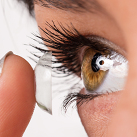Blog
Understanding Migraines
Migraine is a chronic disorder characterized by recurrent, moderate to severe headaches, often in combination with a number of other symptoms. A historical description corresponding to the migraine dates back to around 1500 BC in ancient Egypt where Hippocrates’ writings describe the visual aura that precedes the headache. Worldwide, an estimated 1.3 billion people suffer from migraines, making the disease one of the most common in the general population. The age group most prone to migraines is people 35 to 40 years old, with women twice as likely to develop the disorder than men. About 20% of sufferers experience aura symptoms. Migraines can also occur in children, with 4-5% of adolescents suffering from the disorder. Usually, but not always, the headache occurs unilaterally (affecting half of the head) and throbbing (ie the pain fluctuates in intensity), while it lasts from 2 to 72 hours. Associated symptoms may include nausea, vomiting, photophobia (increased light sensitivity), phonophobia (increased sound sensitivity), and pain that generally gets worse with physical activity. Up to a third of people with migraines experience an aura: A transient visual, aesthetic, or motor disorder that warns that a headache is imminent.
Migraines are caused by a combination of environmental and genetic factors. There are factors that are known to trigger a major migraine attack:
Stress, a major trigger.
Hormones, especially estrogen, as many women experience migraines at the onset of menstruation.
Pregnancy and menopause can cause a migraine attack as well, as can contraceptive treatment.
Various foods and beverages such as chocolate, some cheese, coffee or red wine.
Bright lights, noises but also smells.
Finally, insomnia, intense physical fatigue, weather changes, certain medications, etc.
Migraine is diagnosed after other organic causes of the headache have been ruled out, whether triggers have been observed, and whether other physical symptoms coexist (people with migraines may experience problems beyond migraine episodes, such as low energy, chronic fatigue and problems related to emotional or mental health). It is often helpful for the patient to keep a headache diary, which can help the treating physician make a timely and valid diagnosis. The treatment of migraine is individualized. The initial recommended treatment is: simple non-steroidal anti-inflammatory drugs such as paracetamol, ibuprofen, acetylsalicylic acid, and their test combinations, an antiemetic for nausea, and also avoiding the triggers of a headache (being in a quiet room with low light could help). Special medications, such as triptane or ergotamine, but also others, especially preventive ones, such as anxiolytics, antiepileptics, beta blockers or antidepressants, can be used when simple analgesics are not effective, and always with medical advice and guidance. More specialized and newer treatments can be suggested by the specialist. What could also be really helpful in preventing migraines,is making lifestyle adjustments, such as having regular meals and getting adequate sleep.
In any case, good migraine management is important at an individual level first, because it affects millions of people around the world creating great difficulty in their daily life and function, but also socially and economically, as migraine is estimated to be the most expensive neurological disease in the western world.

 Ελληνικά
Ελληνικά









































